Data released by the Australian Institute of Criminology (AIC) this week show fatal police shootings in Australia have reached an all-time high.
The report on deaths in custody in 2019-20 indicated that there were 24 deaths in police custody or custody-related operations. This is the highest number of shooting deaths since record keeping began in 1989-90.
With the move to weaponise our police with widespread access to weapons such as military-style rifles and crowd control equipment munitions, are we seeing a move from a community service focus to a more force-orientated model of policing?
The report on deaths in custody in 2019-20 indicated that there were 24 deaths in police custody or custody-related operations. Of these, 16 were attributable to police shootings. This is the highest number of shooting deaths since record keeping began in 1989-90.
Over that period, Australian police have shot dead some 164 people. The latest AIC report shows there has been a 78% increase in fatal police shootings between 2018-19 and 2019-20.
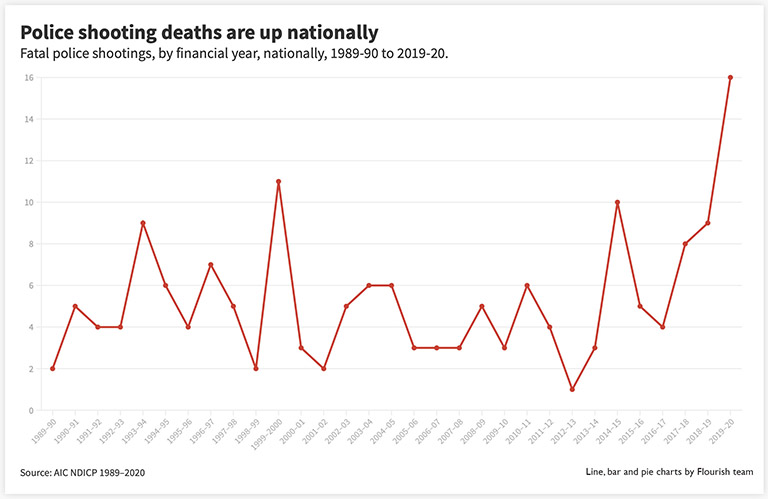
New South Wales and Queensland had the most police shootings with five each, followed by Victoria and Western Australia with two each. Two of those fatally shot were Indigenous, 11 were non-Indigenous, and in three cases the Indigenous status was not stated.
The threat environment
The National Police Memorial lists those police who have been killed on duty or have died as a result of their duties. Since 2010, 22 police members have died, only five of those through the actions of armed offenders. Four involved firearms and one a knife.
To put this in perspective, in 2019-20 there were 58,514 sworn police officers in Australia. While the number of deaths is small, it must be acknowledged that policing is still an inherently dangerous and difficult occupation.
In terms of the general population, homicides in Australia are at historic lows and compare well against international trends. Crime in general has declined in Australia. This trend has continued since the Covid pandemic began.
Are police becoming more enforcement-orientated?
There is little doubt Australian police forces are weaponising in the same way as police in the United States have done in recent years. The rise of the warrior cop is well documented.
But it seems the Covid pandemic has also encouraged a move away from community engagement to enforcing health directives with little room for tolerance.
New South Wales Police Commissioner Mick Fuller instructed his staff to move to a more enforcement-focused approach to Covid health order restrictions, stating: “I am asking you to put community policing to the side for a short period of time.”
In recent weeks, we saw Victoria Police fire rubber bullets to disperse anti-lockdown protesters as their use-of-force choice. Police warned the protesters: “Leave now or force may be used. No further warnings will be given.”
Victoria Police Chief Commissioner Shane Patton later confirmed police used a variety of weapons including pepper balls, foam baton rounds (theses are a less lethal alternative to traditional bullets, also known as kinetic impact projectiles), smoke bombs and stinger grenades that deploy rubber pellets.
He justified the use by arguing: “These crowd control equipment munitions were necessary […] because we can’t allow this type of conduct to go on.”
Yet when the unlawful gathering of large crowds took place for Black Lives Matter protests during Covid restrictions, Victoria Police took little or no action. Such inconsistency in responses simply undermines the legitimacy of police.
Victoria Police deployed a Bearcat armoured vehicle in response to an anti-lockdown protest. This is despite the claim these vehicles would only be used in high-risk incidents such as sieges or the apprehension of armed offenders.
Holding police accountable
Any use of force must be lawful, and simply being a police officer does not necessarily provide that justification. The application of force, be it lethal or otherwise, must be authorised, justified or excused by law. If not, then the use of such force may be criminal.
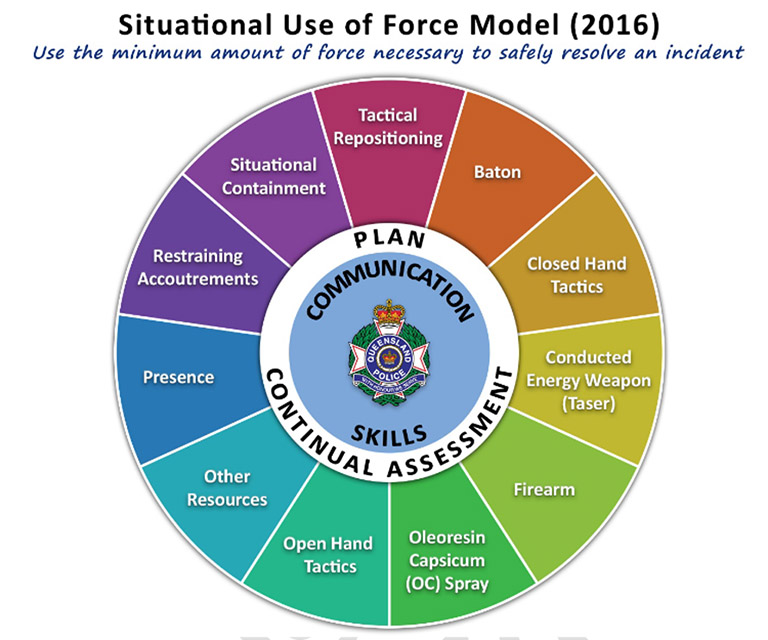
The range of use-of-force options available to police. Queensland Police Service
In Western Australia, a police officer is on trial for the death of Indigenous woman Joyce Clarke, who was fatally shot while allegedly armed with a knife in 2019. In the Northern Territory, Constable Zachary Rolfe is charged with the alleged shooting murder of Indigenous man Kumanjayi Walker.
In 2018, the Queensland government agreed to a $30 million payment following a Federal Court ruling that claimants were deemed to have suffered racial discrimination at the hands of police in their response to the 2004 Palm Island riots. The Queensland Police Union of Employees disagreed with the government’s decision.
What do complaint levels about use of force tell us?
In 2019-20 in Victoria, there were 354 allegations of misconduct through use of force, accounting for 11% of total complaints. In the previous year, use-of-force allegations accounted for 18% of complaints.
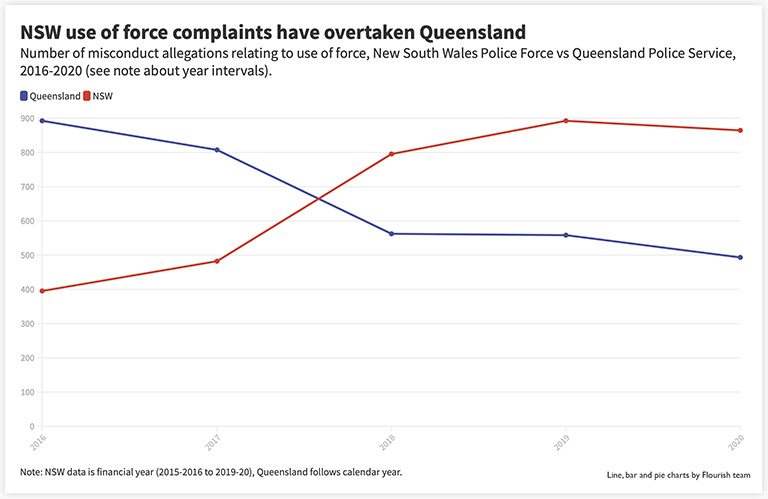
In Queensland, Crime and Corruption Commission data show the number of use-of-force allegations declined from 892 in 2016 to 493 in 2020. In New South Wales the converse occurred, with the number of allegations increasing from 395 in 2015-16 to 864 in 2019-20.
These data would suggest there is no uniform increase in use-of-force complaints.
Where to now?
We should be concerned about such a drastic increase in fatal police shootings. As Covid continues to affect all aspects of life, police are playing a more pivotal role in enforcing new health and social regulations while ensuring society continues to function in a civil manner.
The welfare of the community should always take precedence. However, we need to ensure police do not move to an enforcement-only mentality to achieve this. We want our police to be safe and enforce the law, but we also want them to keep us safe.
This article is republished from The Conversation under a creative commons licence; you can read the original here.
Picture © M. W. Hunt / Shutterstock

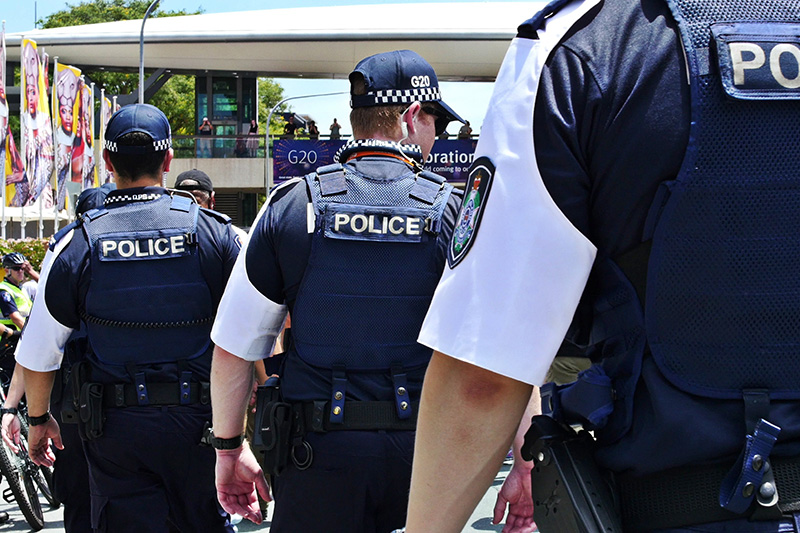
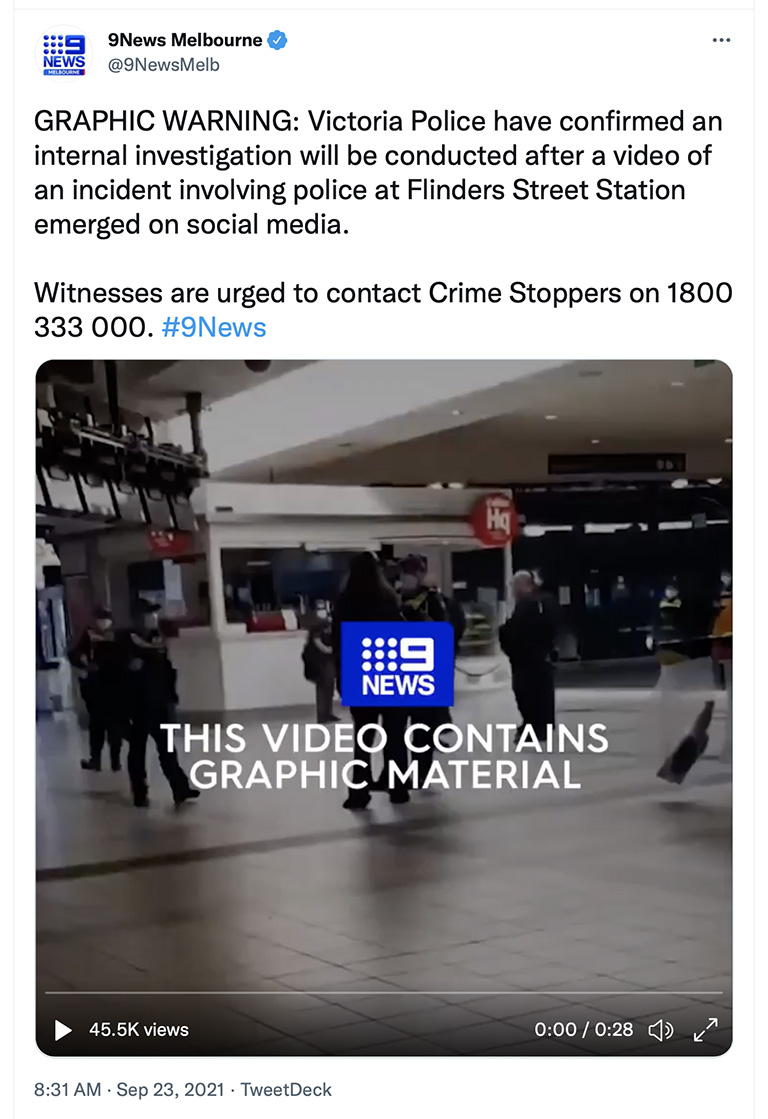
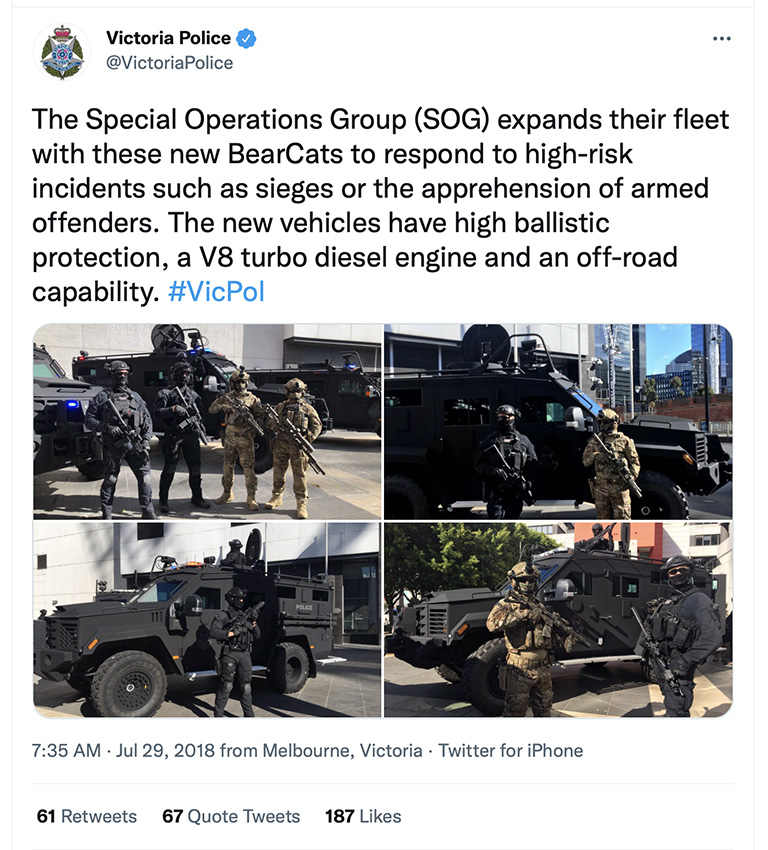

Yea but….. Great piece by Dr Goldsworthy. As a discussion stater -great. Absolutely we should be concerned. Any death at the hands of police is a tradgedy. Not only for the vicim, their family, their wider community, any witnesses, but also an onging tradgedy and trauma for the officers involved, THEIR family and colleagues as well. . As a narrative of bland statistics we don’t doubt what Dr Goldworthy reports.
Could Dr Goldsworthy consider adding to the mix the increasing prevelence in the community and on the fringes, of serious untreated mental illness, social dysfunction, and drug affectation when people are interacting with police. ….
I note the mention of two police currently before Australian courts charged with murder, so I shan’t go further down another thought –line, but there may be a good time later for these to be a conversation starters.
Thank you for the article.
Dr. G.
The article is not balanced. The cause of the shootings may reveal something other than police weaponising and use of force?
Also, the use of force model could do with the words, reasonable, proportionate and self defence.